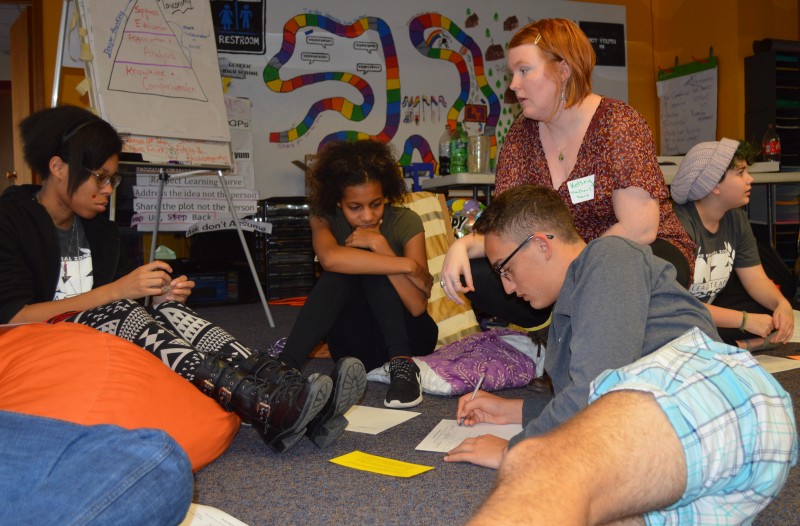“You talk differently to students than we do,” a teacher recently told one of my colleagues when she heard about how we work with teenagers at Neutral Zone, a youth-driven teen center in Ann Arbor, Michigan. After some pondering, I realized that what this teacher observed is the difference between approaching students with a positive youth development mindset versus educating them with a traditional approach to academics — the top-down transfer of knowledge.
What fundamentally happens at most schools might be understood as transactional. Transactions focused on the business of “schooling” happen between school administrators and teachers and, trickling down, transactions focused on “learning” occur between teachers and students. What is missing in this process is the fact that students are human beings who are at a unique stage in their development. Each student needs individualized supports and opportunities in order to help them thrive.
So what can educators do to prepare students for the 21st-century workforce, be active citizens in a democratic society, and — most importantly — support their healthy growth and development? We need to let them lead.
We did it — and you can, too
We’ve learned a lot in the past 20 years about how to empower students to learn and lead. We’ve split this into two sections — the first, for community organizations, and the second, for teachers.
If you’re a community organization…
It’s incredible what young people are capable of when adults have the courage to step back and give youth a chance to make meaningful decisions. Here’s how we do it. At Neutral Zone we emphasize youth voice, involvement and ownership at multiple levels of our organization. This “youth-driven” approach gives youth real responsibility; at the same time, it helps support healthy development, civic engagement and builds 21st century skills and socio-emotional competencies.

Let Teens Drive Programming. We empower teens to not only create works and products driven by their own interests and ideas — they also lead the charge for promoting and managing performances and exhibitions for others, including a 400-person concert venue, the B-Side. They also curate themed visual arts shows, providing a space for hundreds of teen artists to exhibit their works.
Establish a Teen Advisory Council. Our Teen Advisory Council decides what programs are offered at our center. They run an annual fundraiser to raise money that they grant to other programs, and conduct program evaluations and present their findings to the Board. This strengthens their planning and analysis skills as well as data-driven decision making.

Ask Teens to Manage Programs. We train students to serve as facilitators in our weekly programs, with adult staff serving as advisors. Teen facilitators develop agendas, run meetings, ask guiding questions, and use active strategies to keep their peers engaged. These students are learning early how to do this right — which is a great work skill that they will take with them for the rest of their lives.
Put Teens on Your Board. Half of our Board of Directors are teens. They are full voting members and sit on every Board committee, from human resources to finance. They do things that adults might normally be reluctant to let teens do. They help cultivate donors, hire the leader of the organization, approve budgets, and discuss sensitive staffing issues. This gives them real management experience.
If you’re a teacher…
We recommend using a Positive Youth Development mindset to transform your classroom. Here are some specific ideas:
Provide students with safe and supportive environments. Focusing on positive school culture and norms (that are student driven!) and problem-solving approaches to negative behavior — like restorative practice. Learning and participating in these processes not only helps students thrive but encourages them to carry these practices into their adult lives.
Build student-teacher partnerships. Allow youth to have a voice and ownership in what happens both across their schools and in the classroom. Such relationships between youth and adults help to develop students as engaged learners, competent citizens and build an authentic connection between students and teachers.
TAGS:



 Tweet
Tweet 



